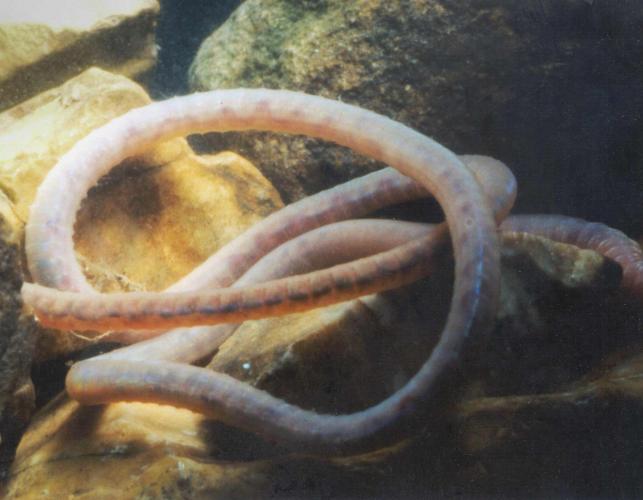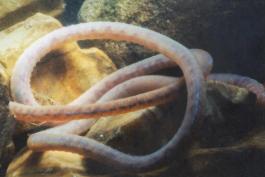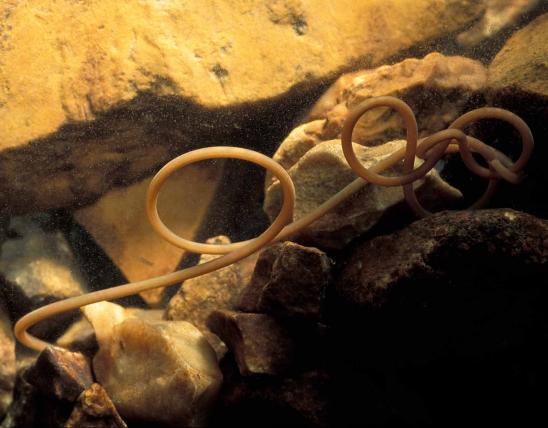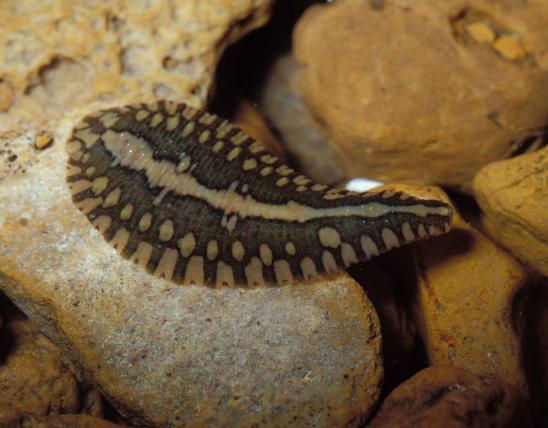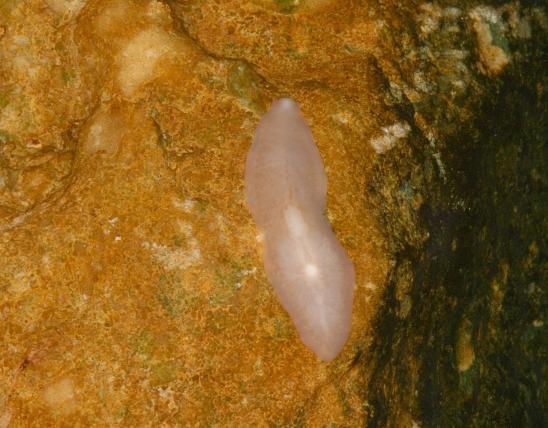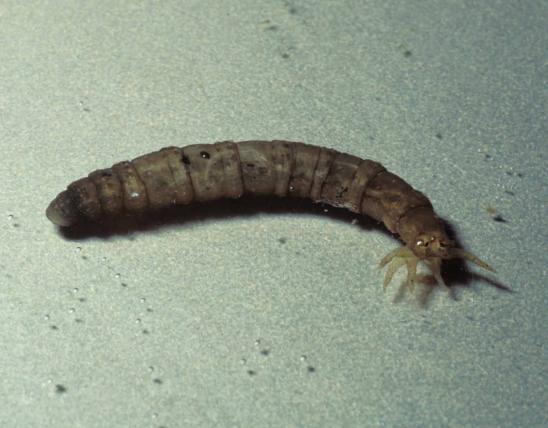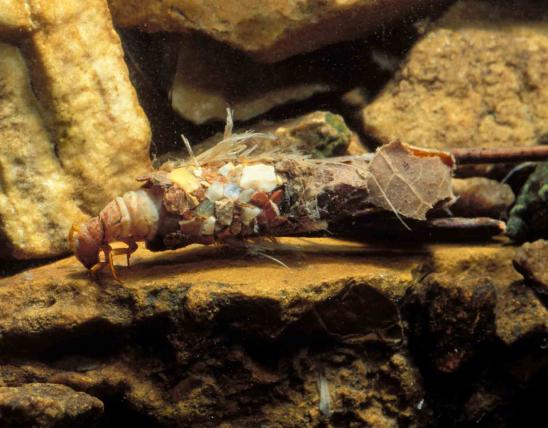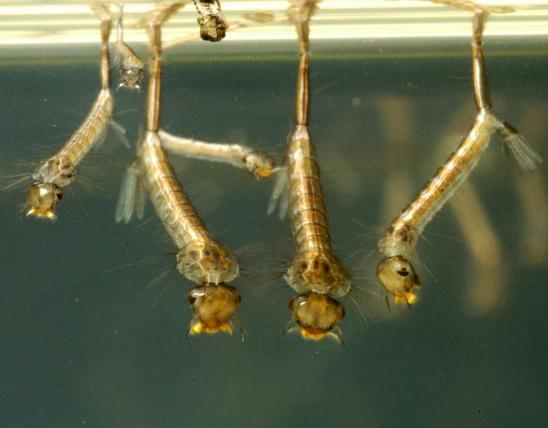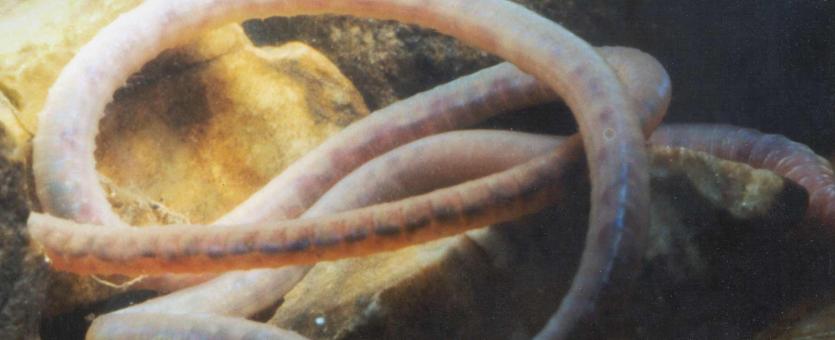
Aquatic worms with segmented, earthworm-like bodies that are round in cross-section (not flattened). Sometimes small bristles are visible. They lack legs, head, and readily seen mouthparts. There are many species; most are red, tan, brown, or black. They move like earthworms, by stretching and pulling.
Similar species
- Some tubificid worms are bright red: they contain hemoglobin, the same oxygen-carrying molecule humans have in our red blood cells. But the wormlike larvae of some midge flies (family Chironomidae) also possess hemoglobin and are also red. Thus red tubificid worms and red midge fly larvae are both sometimes called bloodworms. Midge larvae are insects and have distinct heads, leglike appendages, and often feathery structures.
- Adult horsehair worms are not segmented and are usually quite long for their width; they move by bending, not by stretching and pulling.
- Leeches are flattened and usually move by swimming or by “looping” inchworm-like with front and back suckers.
- Flatworms (planarians; turbellarians) are flat; they move on surfaces by a seemingly motionless gliding.
- The many wormlike larvae of aquatic insects always have some fingerlike, feathery, or leglike appendages, or are plump like caterpillars or grubs.
Length: to about 1 inch.
Statewide.
Habitat and Conservation
Tubificid worms live in a variety of aquatic habitats including sewer systems. They are usually associated with quiet waters containing plenty of silt and decaying organic materials. Many can tolerate low dissolved oxygen levels and high levels of organic pollutants. Thus they can be a sign of poor water quality. When stream ecologists find them in their collections, they have an indication that something might be out of balance in a stream system. When tubificid worms are numerous, they can cover large areas of the bottom sediment, giving the mud a reddish tinge. Sometimes they cling to submerged plants and other objects. When oxygen is especially low, they may come to the surface.
Food
Tubifex and their relatives typically bury their heads in small tubes in the bottom sediment while the rest of their bodies extend upward, waving in the water. Gas exchange (breathing) occurs directly through the skin, while the mouths feed on decomposing organic materials from the substrate. Their wastes are excreted into the water, and in this way tubificid worms “turn over” sediments much as earthworms do.
Status
This is a family of worms in the phylum Annelida. Globally, there are about 17,000 species of annelid worms. Annelida also includes our familiar earthworms, plus leeches and the marine bristleworms, sandworms, and the tubeworms popular in saltwater aquariums. All are soft-bodied segmented worms. In annelids, except for the head and tail, and the digestive tract, a nerve cord, and a few blood vessels that run lengthwise through the animal, the body consists of a long sequence of nearly identical sections. Each section has its own set of organs, just like the rest, usually with wall-like septa dividing each segment from its two neighbors. The many wrinkle-like constrictions you see encircling the body correspond to the septa between segments.
Life Cycle
Tubificid worms are hermaphroditic: each individual produces both sperm and eggs, and during mating, a pair of individuals fertilizes each other’s eggs. Mature tubificids have a clitellum, a ringlike or saddlelike band toward the front part of the body (earthworms have this same structure). The clitellum encircles about 2 or 3 of the body segments, including the segments that produce eggs and sperm, and it secretes a mucus cocoon that protects the fertilized eggs until they hatch. There is no separate larval stage; the young are simply small and immature. As they grow, their length increases by forming new segments just in front of the rearmost section.
Human Connections
People who have aquariums know tubifex worms as a popular fish food. The worms are available freeze-dried; sometimes these are formed into little cubical bales — fodder for pet fish! Meanwhile, when an aquarist finds living tubifex in the tank — usually, they occur in a detritus-choked gravel layer — it’s a sign that the tank needs cleaning!
Ecosystem Connections
Aquatic tubificid worms are associated with detritus, muck, still water, and lower oxygen levels — generally speaking, poor water quality. Yet like their cousins the earthworms, they recycle nutrients, clean up decaying algal mats, till the substrate, and play an incredibly important role in the food chain. They are a crucial food source for young and small fish and many other small aquatic predators.
